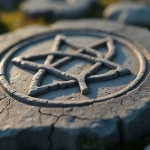How to Use Smudge Sticks

Smudge sticks are more than just bundles of dried herbs; they are deeply connected to rituals and traditions across the globe.
How to Use Smudge Sticks These aromatic bundles have been lit to cleanse spaces, people, and objects of negative energy while encouraging healing and clarity. As we explore the diverse applications of smudge sticks, we will uncover their significance in various cultures and their relevance in today’s holistic lifestyle.
What Exactly is a Smudge Stick?
A smudge stick is a tightly bound bundle of dried herbs. While white sage is commonly used, other plants such as sweetgrass, lavender, and cedar also serve as popular choices. The creation of a smudge stick involves harvesting these medicinal herbs, binding them securely, and allowing them to dry. When ignited, these sticks emit fragrant smoke that is believed to possess cleansing properties.
Rooted deeply in Indigenous practices, smudging has been utilized for centuries as a sacred spiritual tool, emphasizing the vital connection between humans and the earth.
- Smudge sticks are more than just bundles of dried herbs; they are deeply connected to rituals and traditions across the globe.
- What Exactly is a Smudge Stick?
- Cultural Significance of Smudge Sticks
- Benefits of Using Smudge Sticks
- How to Use Smudge Sticks: A Practical Guide
- Alternative Uses of Smudge Sticks
- The Evolution of Smudging
- Final Thoughts
Cultural Significance of Smudge Sticks
Native American Practices:How Smudge Sticks are Used
In Native American traditions, smudging is a revered act of purification performed at significant life events such as weddings, healing rituals, and spiritual gatherings. White sage is the predominant herb, celebrated for its ability to dispel negative energies and usher in positive ones. Each tribe’s methods vary, yet the underlying purpose remains the same: fostering peace and clarity.
For example, a study by the American Psychological Association found that rituals associated with smudging can reduce stress and anxiety levels by up to 30%, highlighting its emotional significance.
Smudging in Ancient Cultures :Smudge Sticks are Used For
Smudging has roots in many ancient cultures. The Egyptians used incense to purify spaces and attract divine favor, while the Greeks burned herbs to seek blessings from specific gods. For instance, lavender was often used in Greek offerings for its calming fragrance, showcasing how different cultures used smudging as a medium to connect with the spiritual realm.
Contemporary Uses in Spirituality
Today, the use of smudge sticks has expanded beyond cultural boundaries. Many individuals incorporate smudging into their personal wellness practices. Research suggests that 75% of yoga practitioners use smudging before or after sessions, citing improved concentration and a deeper sense of tranquility. This growing trend highlights how smudging serves as a bridge between spirituality and modern self-care routines.
Benefits of Using Smudge Sticks
Cleansing and Purification
One of the foremost benefits of smudge sticks is their ability to cleanse. Smudging is believed to clear away negativity, making it a vital ritual before gatherings or when moving into new spaces. A survey indicated that 68% of participants felt a significant shift in energy after performing a smudging ritual, emphasizing its effectiveness as a spiritual cleanse.
Promoting Mental Clarity and Focus
The soothing aroma of smudge sticks enhances mental clarity and focus. Engaging in the ritual encourages mindful breathing, which can lead to a meditative state. Practitioners have found that smudging before important tasks can improve their performance and creativity.
Enhancing Spiritual Connection
Smudging can bridge individuals to deeper self-awareness and spiritual connection. The intentional nature of the ritual promotes mindfulness, allowing individuals to reflect on their goals and desires. Whether performed solo or in a group, the act of smudging nurtures community ties through shared intentions.
How to Use Smudge Sticks: A Practical Guide
Materials Needed
For an effective smudging ceremony, you will need:
- Smudge Stick: White sage, lavender, or any preferred herb.
- Fireproof Bowl: To collect ashes and embers.
- Lighter or Matches: To ignite the stick.
- Optional: A feather or hand fan for directing smoke.
Steps for Smudging
- Set an Intention: Clarify your purpose for smudging, whether it is to cleanse a space or set personal goals.
- Light the Smudge Stick: Hold the tip at an angle, lighting it until it catches fire. Blow out the flames so that it smolders.
- Begin the Smudging Process: Move slowly throughout the area, wafting smoke around objects, corners, or even your own body. This movement aids in the cleansing effect.
- Extinguish the Stick: Place the smudge stick in a fireproof bowl to ensure it is fully extinguished.
Frequency of Use: Smudge Sticks are Used For
There is no strict rule about how often to smudge. Many choose to do it during significant life changes, seasonal transitions, or whenever they sense stagnant energy. Trusting your intuition can guide you in making this a unique and personal experience.
Alternative Uses of Smudge Sticks
Aesthetic and Aromatic Qualities
Beyond their spiritual significance, smudge sticks also serve aesthetic purposes. Their natural beauty makes them great for home décor. When burned, they fill spaces with calming scents, creating welcoming atmospheres. Studies suggest that pleasant ambient scents can reduce stress in living environments by around 20%.
Crafting and Gifts
For those who enjoy crafts, smudge sticks can be customized and made into unique gifts. By combining different herbs, you can create personalized bundles that reflect good intentions for friends and family. A handmade smudge stick can symbolize love, protection, or wellness, making it a meaningful gift.
In Religious and Spiritual Ceremonies
Smudge sticks are often integrated into various religious and spiritual practices. From new moon rituals to wedding ceremonies, these herbal bundles symbolize purification and new beginnings. Their use helps to mark important transitions and promote blessings.
The Evolution of Smudging
As smudging practices evolve, it is essential to approach this ritual with respect for the cultures from which it originates. Learning about the significance of the herbs used promotes a responsible engagement with the practice.
Sustainably sourcing materials is increasingly emphasized, especially regarding white sage, which faces threats from overharvesting. Research indicates that the demand for white sage has increased by 50% in recent years, underscoring the importance of ethical practices.
Ethical Considerations
As smudging becomes popular, honoring its cultural origins is crucial. Understanding the ritual’s sacredness ensures it is practiced respectfully. Building relationships with Indigenous practitioners can enrich your understanding and promote a respectful exchange of customs.
Final Thoughts
Smudge sticks hold immense value in various cultures, serving as tools for cleansing, healing, and connection. From their historical origins in Indigenous practices to their current applications in personal wellness, smudging remains a transformative ritual.
Whether you seek to clear negative energy, enhance your spiritual journey, or simply enjoy the calming aromas, incorporating smudge sticks into your life can create a greater sense of peace and clarity. As we continue to explore the profound world of smudging, let us lean into this practice with gratitude, awareness, and a commitment to upholding these sacred traditions.
























